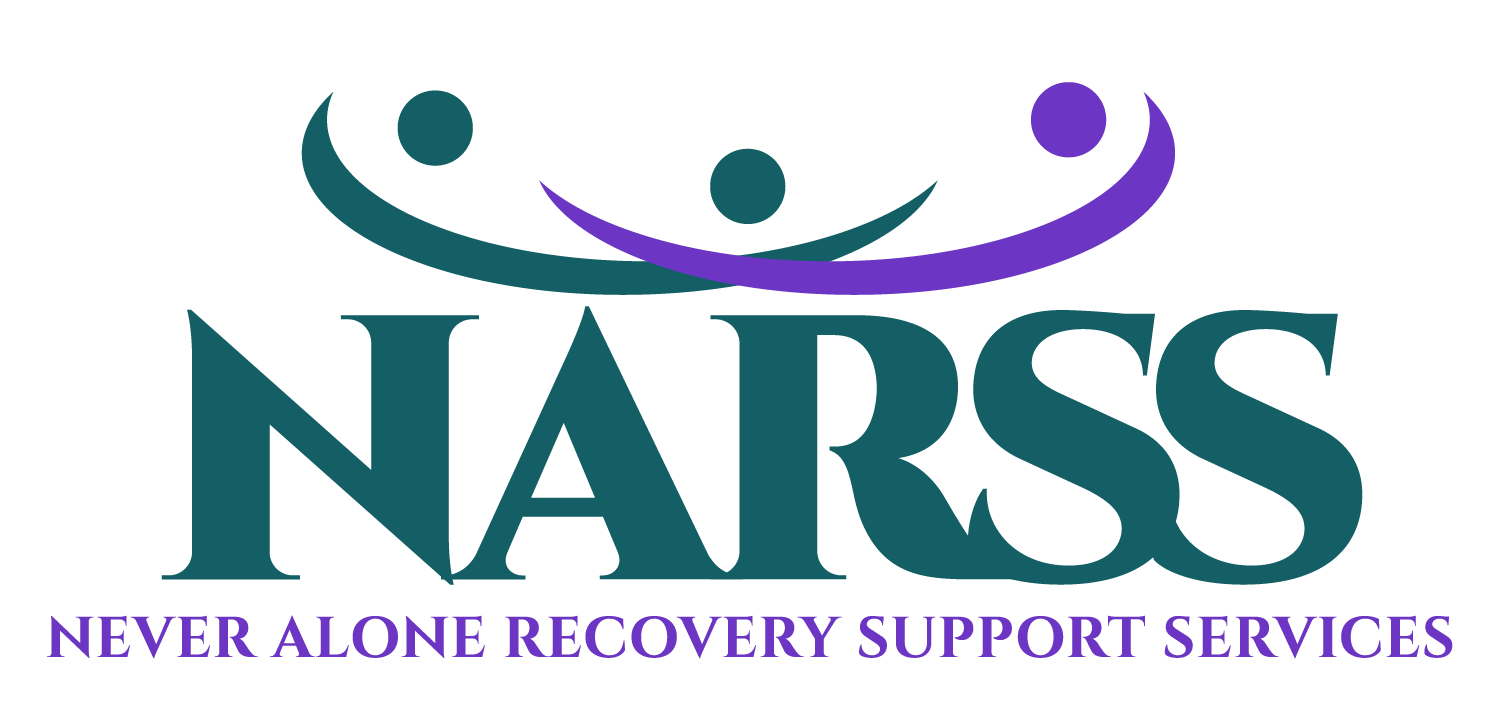Our Programs
Recovery Hall, Community Drop-in Center
Currently located at 122 Main st SE, in Ronan, Montana.
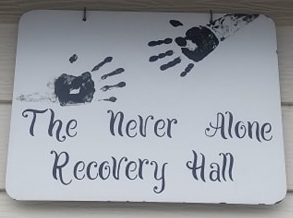
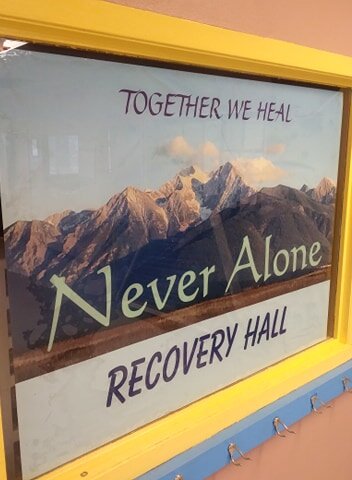
The Drop-in Center’s provide space for events, individual peer support, group peer support, educational groups, Mutual support meetings, and other activities. It has computers, arts & crafts, recovery resource table, and library. The Drop-in Center’s are family friendly, bring your kids (they are your responsibility to supervise).
“About 3 years ago or so the word Recovery was not even a part of my vocabulary, much less knowing what it meant. After I was getting ready to complete the (WATCH) program I was scared that there were no support groups on the rez and my odds of relapse were gonna be high. So I came home to the rez in absolute complacency and was introduced to the Never Alone Recovery Hall and its staff Don & Krystal. I came to the recovery hall and began drug court and since then I am 9 months in recovery and I am grateful to the hall, all meetings, and the new recovery family. Everything a person needs if they honestly want help is here at the Recovery Hall. And you are never alone.”
Pablo HUB
The Hub is located at the Recovery Village in Pablo, we provide recovery support services, run groups, meetings, and hang out.
Individual Support
7-Days a week
9 am - 9 pm
Monday:
8 am, NA meeting (closed meeting)
10 am, Green & Gold Group
12 pm, Recovery Wisdom Group
2:30 pm, Healthy Relationships Group
6:30 pm, Men’s Support Meeting
Tuesday:
9 am, Intro to Recovery Group/WRAP
10 am, Addiction Education Group
12 pm, Red Road to Recovery Meeting
5:30 pm, Conflict Resolution/Anger Management
6 pm, Celebrate Recovery (Faith Based)
7 pm, Alcoholics Anonymous Meeting
Wednesday:
9 am, Nature 120 Group
11 am, Gardening (Seasonal)
12 pm, Leadership Circle (private)
1 pm, Warrior Down Group
5:30 pm, Bear’s Den Sauna
Thursday:
10 am, Employment & Life Skills Group
4:30 pm, Creative Recovery Group (music/poetry)
2 pm-3 pm, NARSS staffing
6 pm, Drum Group
Friday:
9 am, Walking in Balance Group
10:30 Narcotics Anonymous Meeting
12 pm, Residential Community Group
Saturday:
Peer support 9 am to 9 pm
11 am, MRT group (Jay)
Open Activities
5:30 pm, Bear’s Den Sauna
Sunday:
Peer support 9 am to 9 pm
Open Activities
HUB Director: Anthony Meyers
HUB phone: (406) 332-1003
Location: 42297 2nd Ave E. Pablo, MT
Mailing: NARSS HUB, PO Box 406, Pablo, MT 59855
***Online Residential Application***
Please fill out all sections completely before trying to submit or it will not let you submit it.
oathtrack.com/apply/bba0e68b8131
Recovery Residence Program
Participant testimony (Women’s SOS House)
The reason I'm writing this is to deliver a message to the addict who is still suffering from addiction, alcoholism, depression or anything else that's left them feeling wrecked. I have spent 16 years of my life chasing a high I was never going to find while my loved ones, my sweet boys, passions, dreams, and any hope of a career spiraled down the toilet. I know the bleak relapse statistics, for people who go home after a stint in rehab. I decided to participate in drug court an 18-month program of continuing treatment. I eventually settled on one in Lake County Montana I applied to the NARSS Recovery Residence in Pablo. This is my first time being in sober living. I came to the SOS women's house from treatment on May 26th, it has far exceeded my expectations. The house manager screened me while I was in treatment and held a bed for me. Once I arrived at the SOS house I was given a phone with a phone card so I could immediately be in touch with my family and start looking for employment. This small gesture gave me a huge head start and I was very thankful.
Don Roberts, Juanita Reed, Angela Evans and Krystal Orman have gone above and beyond to support me by giving me job referrals, making sure I always had a ride to groups and NA meetings. These individuals, this community and this home have had an immeasurable positive influence in my life. It was unexpected, loving, warm and powerful. I cannot put into words how much I needed to feel like I belonged. For the first time in my life I had an internal sense of actually belonging. When they could have been doing anything with their day they chose to spend it with me, teaching me, guiding me through the steps with patience and humor helping me set foundations for the beautiful life I lead today.
Carissa C.
Recovery Residence Program
Safe and Off the Streets (SOS) Program Description
SOS is a residential social recovery program for adults who are seeking recovery from alcohol and other drugs. All clinical components will be provided by outside agencies licensed to provide such services. Currently, our location’s serve up to 8-men and 6-women. The primary goals of the SOS program are:
1. Reduce the isolation addicted individuals feel from the community and from one another
2. Improve their recovery support systems and provide access to clinical services
3. Provide a safe and sober living environment where participants have time to learn new life skills and develop a strong recovery foundation
4. Provide long-term recovery support services so that participants can gain recovery tools and practice a new recovery lifestyle
What it looks like:
Members of the Never Alone Recovery Community (anyone seeking recovery can be a member) can request entrance into the SOS program.
The criteria for admittance into the SOS program are willingness to: participate in treatment if needed, participate in mutual support meetings, participate in Recovery groups and events, become employed or enroll in higher education, pay program fee, and provide random UA drug testing upon request.
NARSS does not discriminate based on ethnicity, religion, gender identity, sexual orientation.
*The Recovery Village program requires proof of Tribal affiliation.
· Participants will pay a monthly program fee to help the sustainability of the program. The fee is $500 a month (due within the first month).
· Participants are expected to follow all program rules and house standards. The safety of all participants and the facility is a primary concern, and participants may be removed from the program at any time.
· When the participant has met the requirements: signed all forms and paid the program fee, they will be offered an opportunity to stay in our facilities as a program resident. The facilities are gender specific.
· Each facility will be supervised by a senior peer mentor who lives in the facility.
o Community meetings will address any rule/standards issues, interpersonal conflicts, and peer accountability. NARSS staff will make themselves available when requested
· Participants may be required to take part in program components such as:
o Mental Health and Addiction Counseling (follow Tx plan)
o Individual peer support sessions
o Near daily self-help (AA/NA/ACA/Wellbriety) meetings
o Employment and financial responsibility classes
o Parenting classes if needed, Anger management classes if needed
o Non-discriminatory individual spiritual practices
o Cultural values group, relapse prevention group, pathways to recovery group
· Participants are expected to gain employment or become a fulltime student. Initially, they have 60-days to come into compliance with this expectation. In the event of employment termination, participants will have 30-days to come back into compliance. Failure to gain employment or start school will result in participant being asked to leave.
o Exceptions will be made for IOP programing or severe disabilities; in this case the participant may be asked to do volunteer community service work.
Scoobie’s SOS House
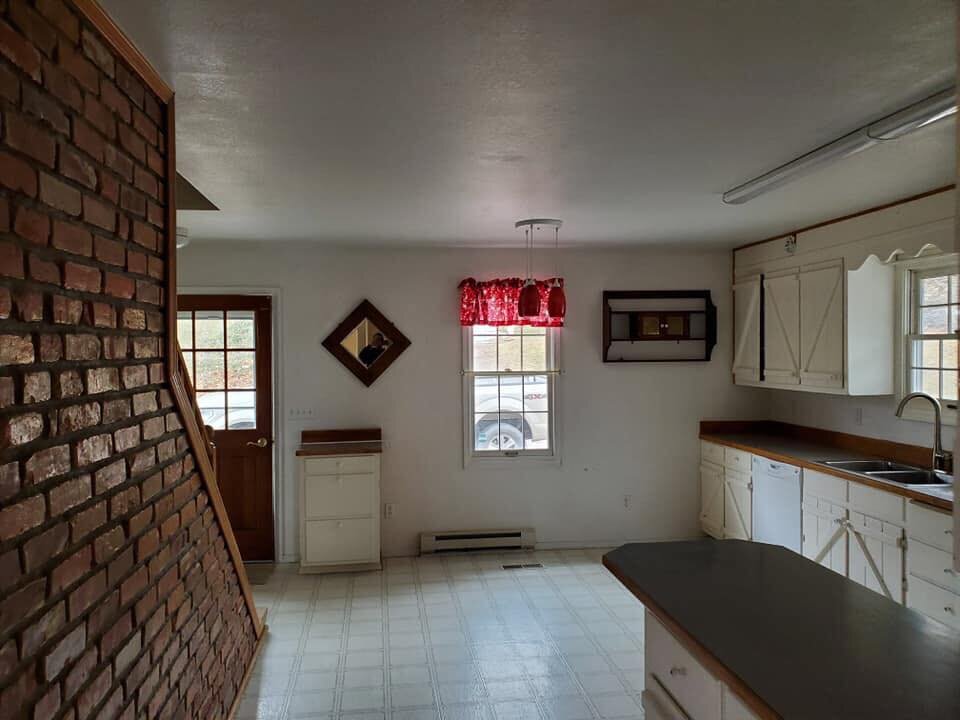
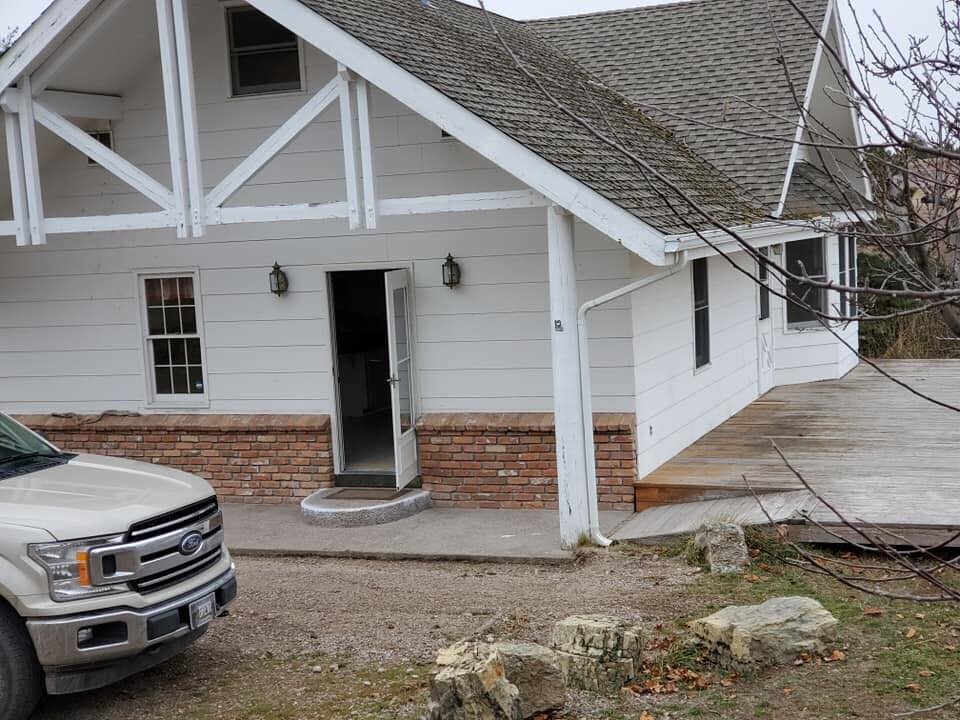
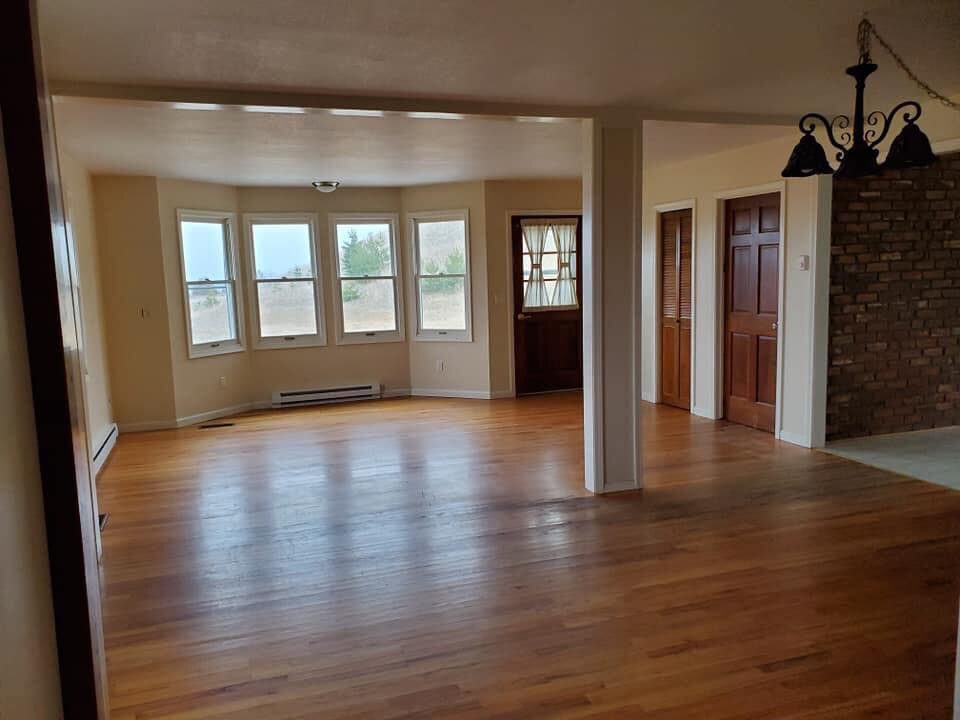
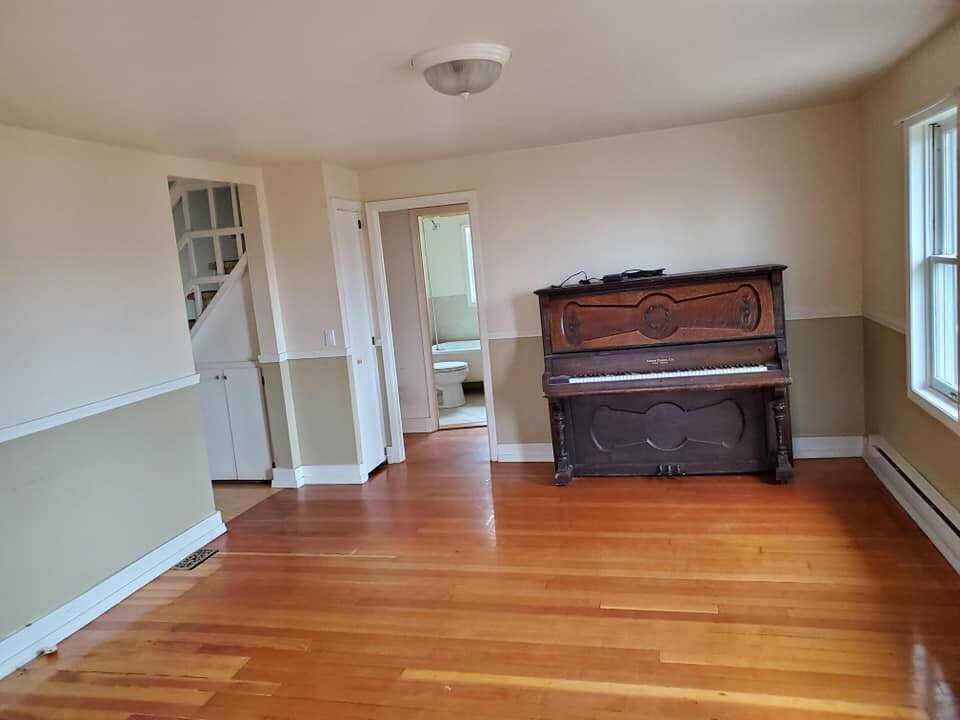
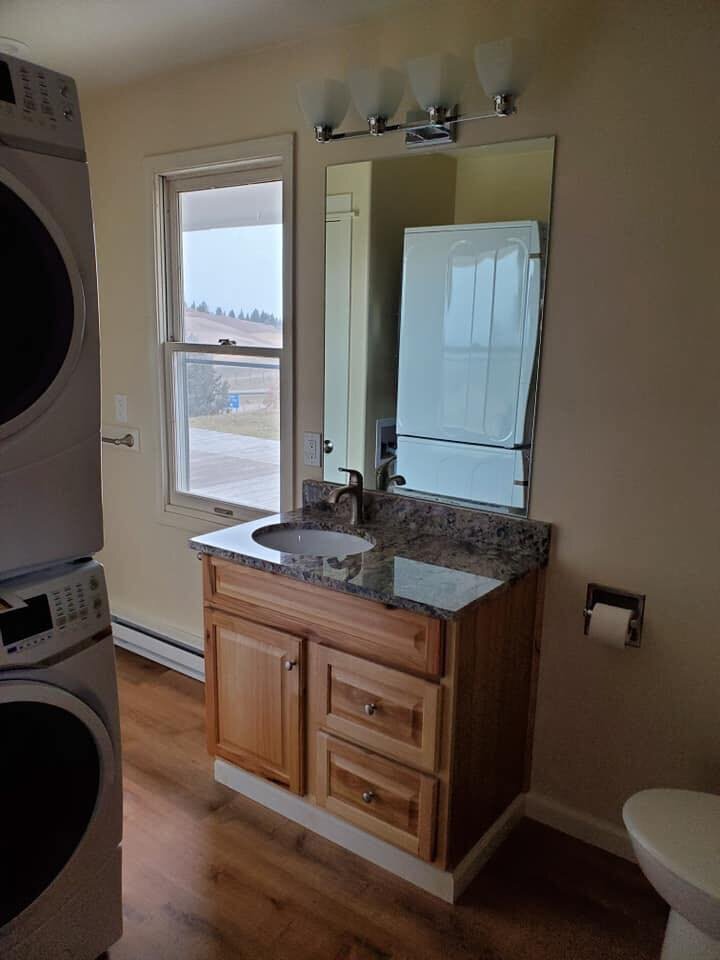
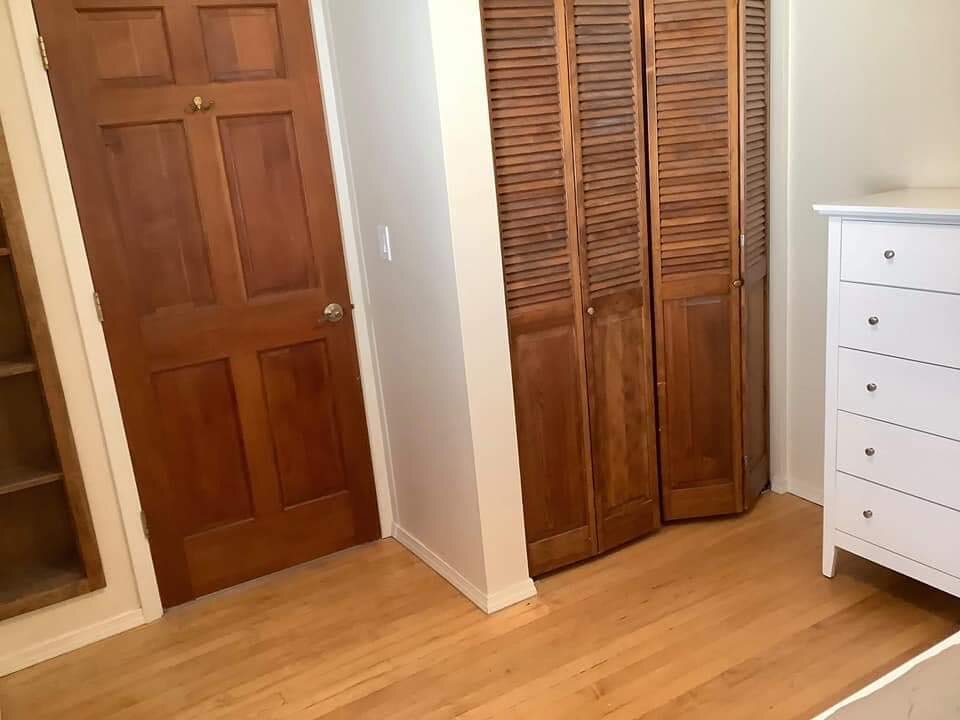
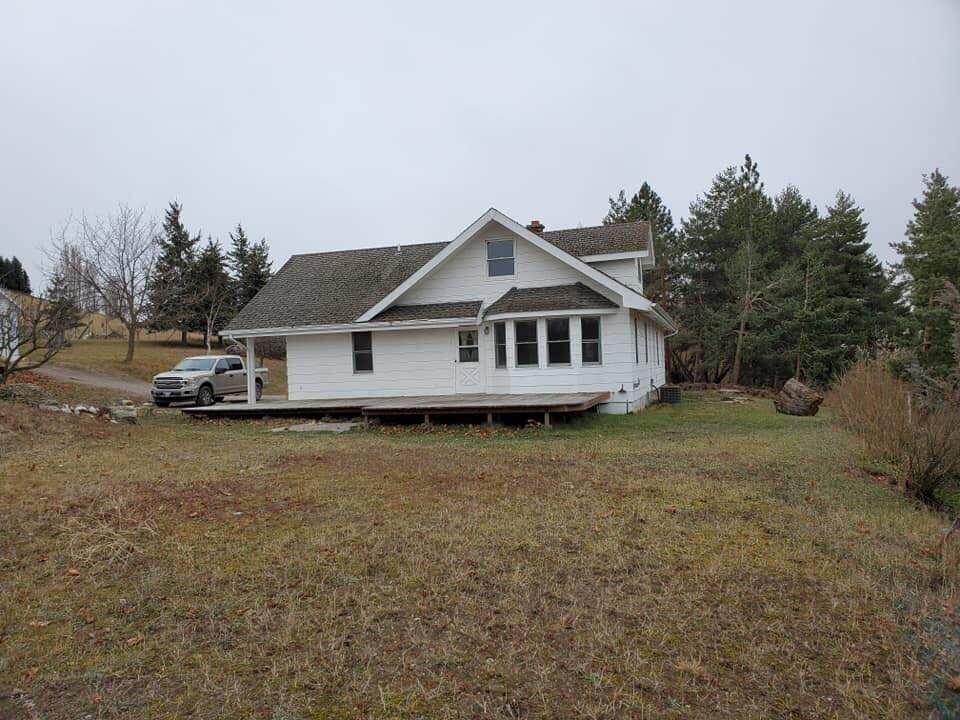
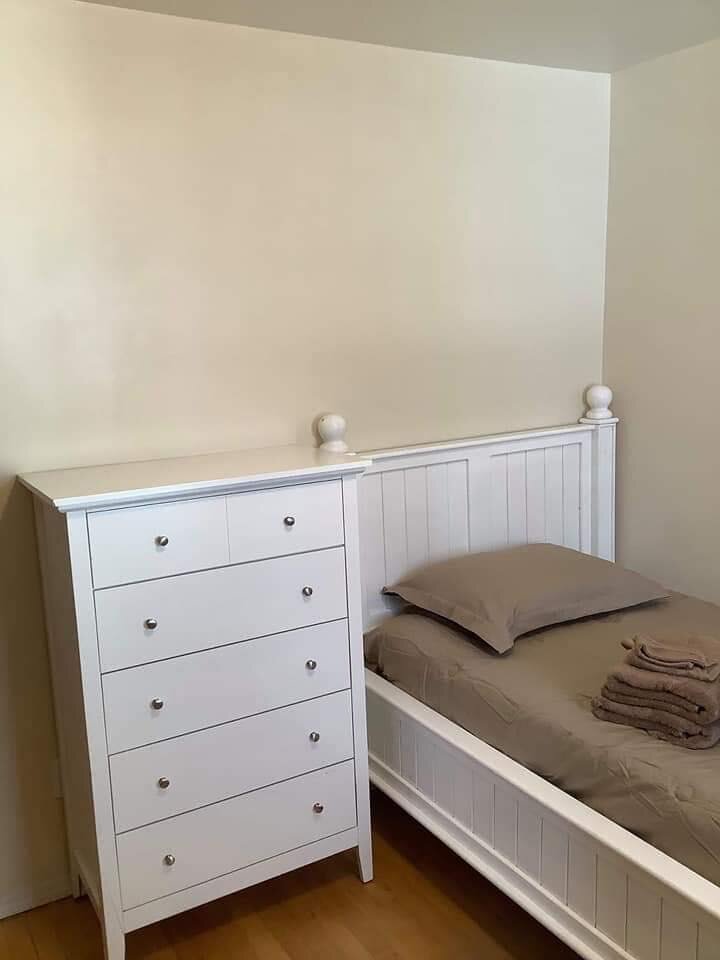
Our SOS house located in Polson, MT houses up to 7 individuals.
Recovery Village Program (overview)
The NARSS Recovery Village is a Recovery Residence Program. It follows the National Alliance of Recovery Residences (NARR) standards of operation and is under the Recovery Residence Alliance of Montana (RRAM) certification oversight. What this means is that NARSS Recovery Residence Programs are annually certified and in compliance with national standards and have statewide compliance measures that must be met to retain certification. See links below for more information:
https://narronline.org/affiliate-services/standards-and-certification-program/
https://www.rramontana.org/about-rram
Collaboration:
NARSS collaborates with the Salish Kootenai Housing Authority (SKHA) to provide Recovery Residence program opportunity for the following population:
· CSKT Tribal Members
· CSKT Descendants
· Non-enrolled parents in custody of CSKT enrolled minors
· Members of other Federally recognized Tribes
Recovery Community Organization:
NARSS is a 501c3 Recovery Community Organization (RCO). What that means is that our Board of Directors, staff, and volunteers identify as people in long-term recovery. We follow the Social Learning Model and framework, offering non-clinical recovery support. We strive to model healthy recovery lifestyles and skills.
It is important to understand that our Recovery Residence programs are just an extension of our local recovery community. The Recovery Village is not a treatment facility. It is just a recovery community living together to create a safe, abstinence-based space, where we can utilize community wisdom to teach recovery skills and support each other on our individual recovery journeys.
The hub of our Recovery Community is the Recovery Hall currently located in Ronan. The Recovery Hall is a community drop-in center. There is no charge to utilize this community resource. It is staffed with individuals in recovery who have been trained to provide peer Recovery Support Services. We expect individuals applying for the residential program to participate in our larger recovery community support systems. Individuals do not have to participate in all services, but are required to participate in some. These services include:
· Daily 12-step meetings in the evenings
· Recovery support and skill building groups weekday mornings
· Individual peer support and recovery support services throughout the work day
· Direct linkage and advocacy for mental health and substance use disorder clinical services
· State Job Service and Vocational Rehabilitation trainings and linkage to services
· Recovery events
· Local Consumer Advisory Council (quarterly)
Eligibility Screening:
All Recovery Village applicants must meet the following eligibility points:
· Tribal affiliation in one of these areas (tribal member, CSKT descendant, or non-enrolled person who has custody of CSKT enrolled minors)
· Meet SKHA low-income threshold
· Show ability and willingness to pay the monthly $500 program fee plus, fair split of any unit costs with other participants in the unit (such as internet, cleaning supplies, etc.)
· Read and sign all orientation paperwork showing an understanding of program rules and expectations
· Understand and agree that this is a communal village setting, and applicants are expected to participate in community meetings, mutual support meetings, community events, and skill building groups.
Once NARSS has accepted the application, participant will be notified to go to the Salish Kootenai Housing Authority (SKHA) office and apply through them for the Recovery Village Program. SKHA will check eligibility status and contact NARSS to let us know the application has been approved. When NARSS gets approval notification from SKHA, the application process will be complete and the participant will be assigned to a unit.
SKHA application link: https://skha.org/forms-policies/
Understanding the Financial Piece:
There are 2-primary financial pieces applicants need to be aware of:
1. NARSS has a program fee of $500 that goes to program operation support.
2. Participants are expected to pay fair share of any unit costs with other participants in the unit (such as internet, cleaning supplies, etc.)
*Neglect to fulfill either of these financial obligations will be grounds for program discharge
Program phases:
Phase 1: Initial 1-week orientation period; participants only leave the property with other recovery peers, begin attending Recovery groups and mutual support meetings, get scheduled for clinical services, sign all orientation paperwork, get signed up for Medicaid or other resources they will need.
Phase 2: Become employed or sign up for college, continue outpatient treatment recommendations, attend 3-mutual support meetings weekly, attend all unit meetings, attend at least 1-recovery skills group weekly.
Phase 3: Get clinical verification of treatment completion (Dx in sustained remission), begin mentoring newer participants, maintain some kind of community service position, maintain employment, stay abstinent, practice both foundational and advanced recovery skills to promote ongoing growth.
*We do not put a time frame on how long participants want to live in the Recovery Village. Participants can stay until they are secure in their recovery and do not feel they need program level of support. We are a community village and we encourage long-term residency.
What is a recovery community organization (RCO)? +
According to William White, "A recovery community organization (RCO) is an independent, non-profit organization led and governed by representatives of local communities of recovery... The broadly defined recovery community–people in long-term recovery, their families, friends and allies, including recovery-focused addiction and recovery professionals–includes organizations whose members reflect religious, spiritual and secular pathways of recovery. The sole mission of an RCO is to mobilize resources within and outside of the recovery community to increase the prevalence and quality of long-term recovery from alcohol and other drug addiction. Public education, policy advocacy and peer-based recovery support services are the strategies through which this mission is achieved."
What is a Recovery Residence? +
According to the National Association of Recovery Residences (NARR), "Recovery residence (RR) is a broad term describing a sober, safe, and healthy living environment that promotes recovery from alcohol and other drug use and associated problems. Many thousands exist in the United States that vary in size, organization, and target population. (The exact number of recovery residences is unknown since many RRs are not regulated by government or independent organizations.) At a minimum, RRs offer peer-to-peer recovery support with some providing professionally delivered clinical services all aimed at promoting abstinence based, long-term recovery. Recovery residences are sober living environments, meaning that residents are expected to abstain from alcohol and illegal drug use."
What are Recovery Support Services? +
According to Linda Kaplan, "Recovery support services (RSSs) are nonclinical services that assist individuals and families to recover from alcohol or drug problems. They include social support, linkage to and coordination among allied service providers, and a full range of human services that facilitate recovery and wellness contributing to an improved quality of life. These services can be flexibly staged and may be provided prior to, during, and after treatment. RRSs may be provided in conjunction with treatment, and as separate and distinct services, to individuals and families who desire and need them. Professionals, faith-based and community-based groups, and other RSS providers are key components of ROSCs. Recovery support services are typically provided by volunteers or paid staff members who are familiar with their community’s support for people seeking to live free of alcohol and drugs. Often recovery support services are provided by peers—people in recovery."
SAMHSA’s list of the Four Major Dimensions that support a life in recovery: +
- Health: overcoming or managing one’s disease(s) as well as living in a physically and emotionally healthy way;
- Home: a stable and safe place to live;
- Purpose: meaningful daily activities, such as a job, school, volunteerism, family care taking, or creative endeavors, and the independence, income and resources to participate in society;
- Community: relationships and social networks that provide support, friendship, love and hope.
SAMHSA’s list of the 10 Guiding Principles of Recovery: +
- Recovery emerges from hope: The belief that recovery is real provides the essential and motivating message of a better future—that people can and do overcome the internal and external challenges, barriers, and obstacles that confront them. Hope is internalized and can be fostered by peers, families, providers, allies, and others. Hope is the catalyst of the recovery process.
- Recovery is person-driven: Self-determination and self-direction are the foundations for recovery as individuals define their own life goals and design their unique path(s) towards those goals. Individuals optimize their autonomy and independence to the greatest extent possible by leading, controlling, and exercising choice over the services and supports that assist their recovery and resilience. In so doing, they are empowered and provided the resources to make informed decisions, initiate recovery, build on their strengths, and gain or regain control over their lives.
- Recovery occurs via many pathways: Individuals are unique with distinct needs, strengths, preferences, goals, culture, and backgrounds—including trauma experience—that affect and determine their pathway(s) to recovery. Recovery is built on the multiple capacities, strengths, talents, coping abilities, resources, and inherent value of each individual. Recovery pathways are highly personalized. They may include professional clinical treatment; use of medications; support from families and in schools; faith-based approaches; peer support; and other approaches. Recovery is non-linear, characterized by continual growth and improved functioning that may involve setbacks. Because setbacks are a natural, though not inevitable, part of the recovery process, it is essential to foster resilience for all individuals and families. Abstinence from the use of alcohol, illicit drugs, and non-prescribed medications is the goal for those with addictions. Use of tobacco and non prescribed or illicit drugs is not safe for anyone. In some cases, recovery pathways can be enabled by creating a supportive environment. This is especially true for children, who may not have the legal or developmental capacity to set their own course.
- Recovery is holistic: Recovery encompasses an individual’s whole life, including mind, body, spirit, and community. This includes addressing: self-care practices, family, housing, employment, transportation, education, clinical treatment for mental disorders and substance use disorders, services and supports, primary healthcare, dental care, complementary and alternative services, faith, spirituality, creativity, social networks, and community participation. The array of services and supports available should be integrated and coordinated.
- Recovery is supported by peers and allies: Mutual support and mutual aid groups, including the sharing of experiential knowledge and skills, as well as social learning, play an invaluable role in recovery. Peers encourage and engage other peers and provide each other with a vital sense of belonging, supportive relationships, valued roles, and community. Through helping others and giving back to the community, one helps one’s self. Peer operated supports and services provide important resources to assist people along their journeys of recovery and wellness. Professionals can also play an important role in the recovery process by providing clinical treatment and other services that support individuals in their chosen recovery paths. While peers and allies play an important role for many in recovery, their role for children and youth may be slightly different. Peer supports for families are very important for children with behavioral health problems and can also play a supportive role for youth in recovery.
- Recovery is supported through relationship and social networks: An important factor in the recovery process is the presence and involvement of people who believe in the person’s ability to recover; who offer hope, support, and encouragement; and who also suggest strategies and resources for change. Family members, peers, providers, faith groups, community members, and other allies form vital support networks. Through these relationships, people leave unhealthy and/or unfulfilling life roles behind and engage in new roles (e.g., partner, caregiver, friend, student, employee) that lead to a greater sense of belonging, person-hood, empowerment, autonomy, social inclusion, and community participation.
- Recovery is culturally-based and influenced: Culture and cultural background in all of its diverse representations—including values, traditions, and beliefs—are keys in determining a person’s journey and unique pathway to recovery. Services should be culturally grounded, attuned, sensitive, congruent, and competent, as well as personalized to meet each individual’s unique needs.
- Recovery is supported by addressing trauma: The experience of trauma (such as physical or sexual abuse, domestic violence, war, disaster, and others) is often a precursor to or associated with alcohol and drug use, mental health problems, and related issues. Services and supports should be trauma-informed to foster safety (physical and emotional) and trust, as well as promote choice, empowerment, and collaboration.
- Recovery involves individual, family, and community strengths and responsibility: Individuals, families, and communities have strengths and resources that serve as a foundation for recovery. In addition, individuals have a personal responsibility for their own self-care and journeys of recovery. Individuals should be supported in speaking for themselves. Families and significant others have responsibilities to support their loved ones, especially for children and youth in recovery. Communities have responsibilities to provide opportunities and resources to address discrimination and to foster social inclusion and recovery. Individuals in recovery also have a social responsibility and should have the ability to join with peers to speak collectively about their strengths, needs, wants, desires, and aspirations.
- Recovery is based on respect: Community, systems, and societal acceptance and appreciation for people affected by mental health and substance use problems— including protecting their rights and eliminating discrimination—are crucial in achieving recovery. There is a need to acknowledge that taking steps towards recovery may require great courage. Self-acceptance, developing a positive and meaningful sense of identity, and regaining belief in one’s self are particularly important.
SAMHSA's 17-elements of recovery-oriented systems of care +
- Person-centered
- Inclusive of family and other ally involvement
- Individualized and comprehensive services across the lifespan
- Systems anchored in the community
- Continuity of care
- Partnership-consultant relationships
- Strength-based
- Culturally responsive
- Responsiveness to personal belief systems
- Commitment to peer recovery support services
- Inclusion of the voices and experiences of recovering individuals and their families
- Integrated services
- System-wide education and training
- Ongoing monitoring and outreach
- Outcomes driven
- Research based
- Adequately and flexibly financed
What is Community Living and Participation
"Recovery for individuals with behavioral health conditions is greatly enhanced by social connection. Yet, many people with mental and/or substance use disorders are not fully engaged in their communities either through personal relationships, social events, or civic activities. Unfortunately, many individuals often remain socially isolated and excluded. Negative perceptions, prejudice, and discrimination contribute to the social exclusion of people living with behavioral health disorders.
People living with mental and/or substance use conditions can increase social connections greatly when they have access to recovery-oriented services and establish positive relationships with family and friends. Greater social connections lead to improved economic, educational, recreational, and cultural opportunities that are generally available.
In a socially inclusive society, people in recovery have the opportunity and necessary supports to contribute to their community as citizens, parents, employees, students, volunteers, and leaders. Prevention activities help create communities in which people have an improved quality of life that includes healthier environments at work and in school, and supportive neighborhoods and work environments. Social connections and understanding also help people in recovery from addictions benefit from alcohol- and tobacco-free activities in the community."
